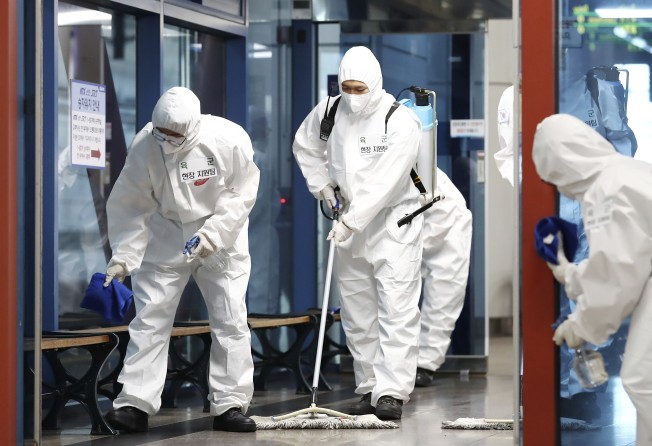Unlinked coronavirus cases haunt Asian governments as they seek to reopen
- In Hong Kong and Australia, unknown methods of transmission prompt governments to implement sweeping measures
- On the other hand, South Korea and Japan have been able to take a targeted and nimble approach

As countries across Asia-Pacific struggle with resurgences of the coronavirus, one data point is steering government responses: the share of cases with no clear indication of how infection occurred. These patients cannot be linked to other confirmed infections or existing outbreaks by virus responders, indicating hidden chains of transmission.
A growing proportion of such cases in a city’s resurgence pushes governments, like in Australia and Hong Kong, to take broad and blunt action, returning entire cities to lockdown-like conditions.
“You can hardly contain the outbreak because you have no idea where they will come out next,” said Yang Gonghuan, former deputy director general of China’s Centre for Disease Control and Prevention. “When there’s more cases where the origins are unknown, it adds to the difficulty for containment.”
In contrast, a low share of cases of unknown origins means that authorities can stay relatively relaxed – like in South Korea and Japan – even if total daily new infections reach the hundreds. These countries can take a targeted and nimble approach, shutting down schools or workplaces where clusters are found, but allowing the rest of the population to live normally.
This data point is a telltale sign of whether resurgences across the world will flare up into bigger waves, and if residents need to gird themselves for a return to lockdown.
Here’s a breakdown of how the places fighting flare-ups are using the number to guide their responses:
Hong Kong
The Asian financial hub enjoyed three months of normal life before a surprise resurgence this month that looks to set to be its worst wave ever. Infections of “unknown origins” have surged to half of all new local cases, indicating that they’re emerging from all corners.
Hong Kong has reacted swiftly, levying its strictest restrictions on the city of 7.5 million. Schools started summer break early while bars, gyms and beaches have been shut. Public gatherings are limited to four people and those refusing to wear masks on public transport will be fined HK$5,000 (US$645).
Japan
Termed “infections with unknown routes” by Japanese officials, the share of such cases when the new outbreak started about a month ago was initially low at about one fifth. This was cited by the government for taking relatively little action and continuing to open up the economy and society.
But the share of unknown origin cases has now risen to about 45 per cent, raising alarm. While the Japanese government has no legal power to force businesses to shut down, the situation has prompted the country’s Economy Minister Yasutoshi Nishimura to strike a harsher tone on nightclubs, warning that some may be asked to close if they don’t comply with guidelines.
On Wednesday, Tokyo raised its alert level to the highest on a four-point scale and asked people to modify their behaviour to prevent further spread.
“We need to ensure that this wave does not get any bigger and trigger a state of emergency,” Nishimura said on Tuesday. “I feel we are approaching the stage.”
South Korea
The country lauded for its success in taming the virus through rapid testing and aggressive contact tracing without lockdowns continues to maintain relative composure in facing resurgences. This is likely due to the fact that only one-tenth of new cases in South Korea in the first two weeks of July came from unknown routes of transmission.
While authorities have introduced electronic exit and entry systems into high-risk areas like gyms and nightclubs, they’ve not had to impose broad measures restricting people’s movement even as daily new cases hover between 30 to 60 plus – sometimes more than Hong Kong’s.
The emergence of this category of cases and their influence on containment policy is due to the insidious infectiousness of the coronavirus, a quality that has allowed it to spread so widely in a short time. There is much that scientists still do not understand about how the virus behaves, including whether it lingers in the air and for how long, and how it was traced to the packaging of imported shrimp in China.
“Such unexplained hotspots are still relatively few in this region,” Yang said. “But when they show up, people have more worries about the future.”
Australia
The 5 million residents of Melbourne are in the midst of a government-mandated six-week lockdown thanks to a new wave of coronavirus infections in Victoria state, 51 per cent of which are of unknown origins or still under investigation. The outbreak is spilling over to Sydney, raising fears that Australia’s largest city will be a fresh hotspot.
The lockdown, which included the barring of 3,000 residents in public-housing tower blocks from leaving their flats for several days until they were all tested, is reminiscent of the stringent controls imposed in Wuhan, the Chinese city where the virus first emerged. The measure made Australia one of the only western democracies to mandate that people cannot step outside their homes.